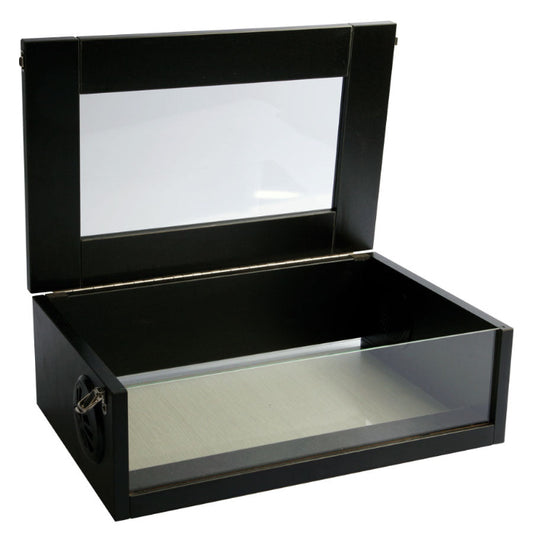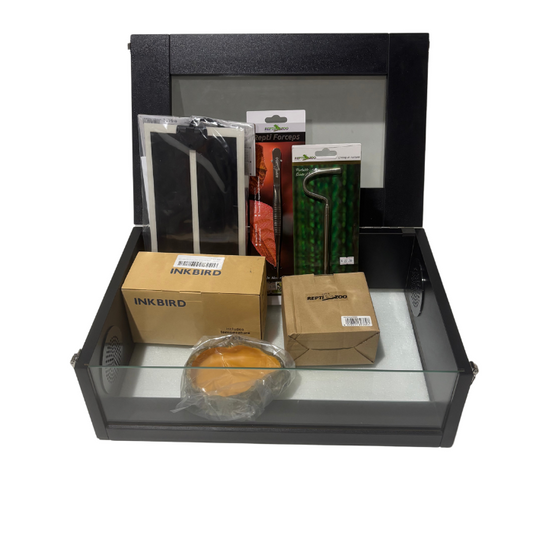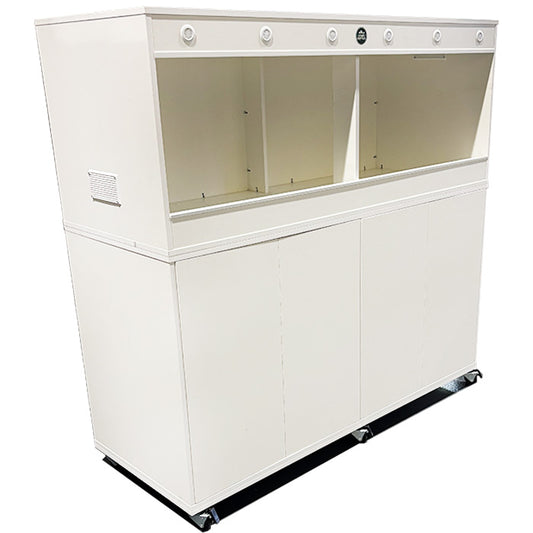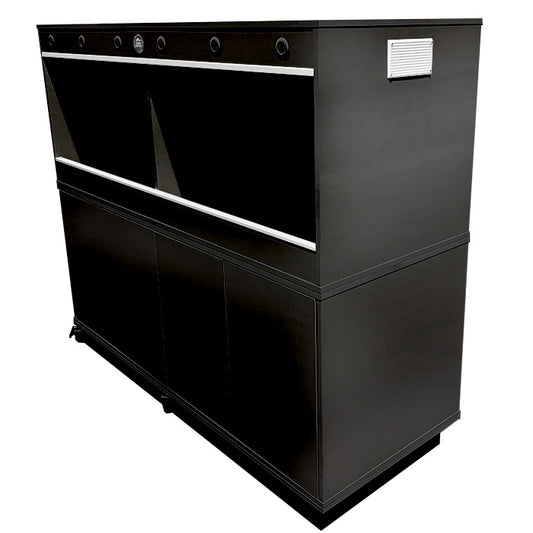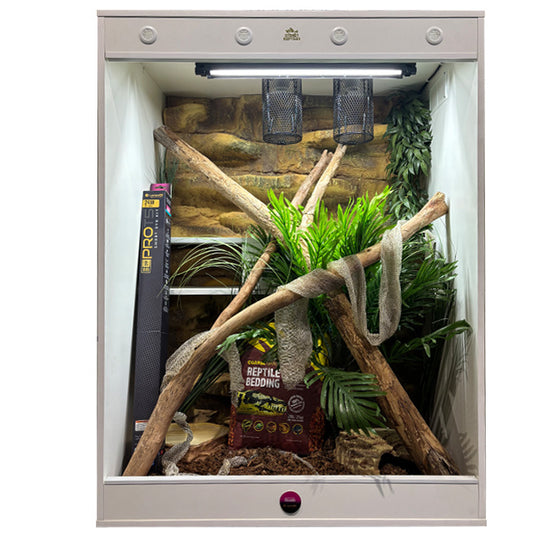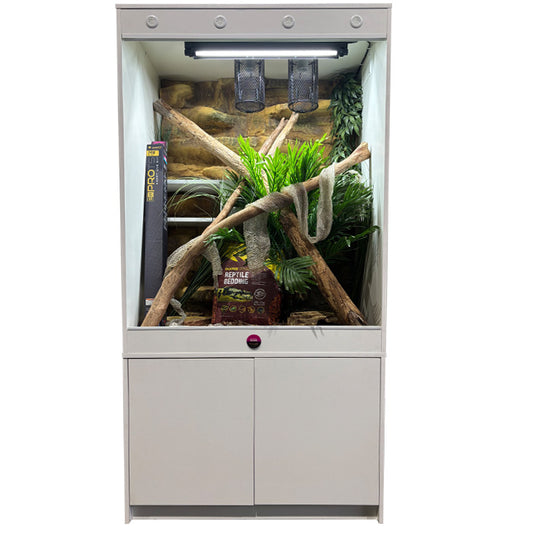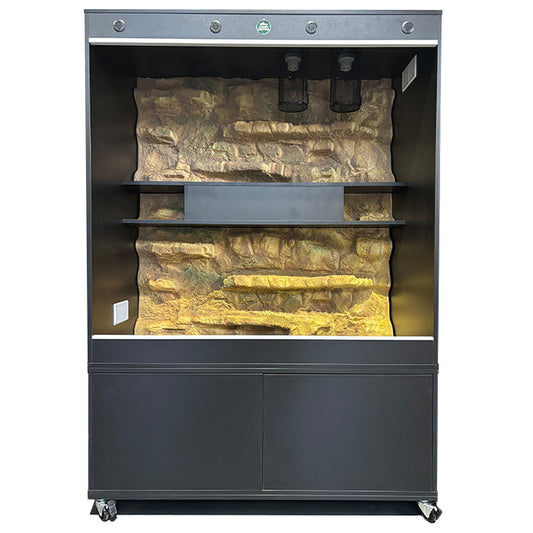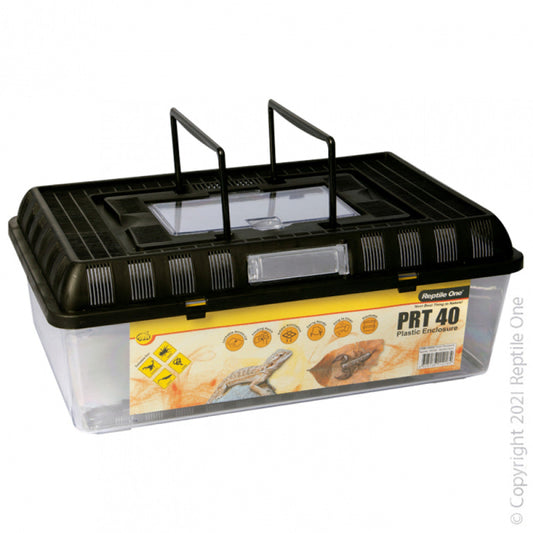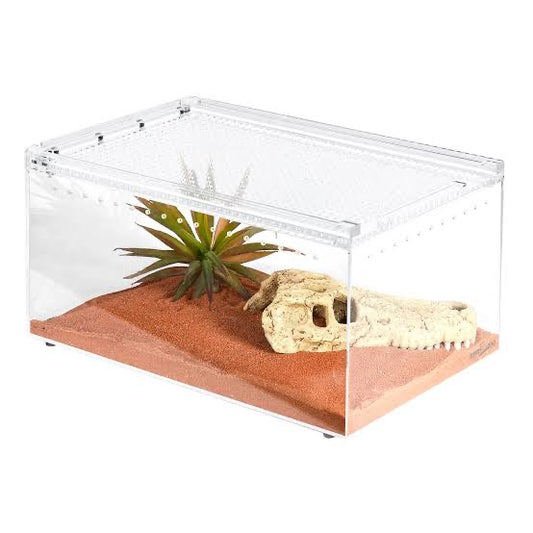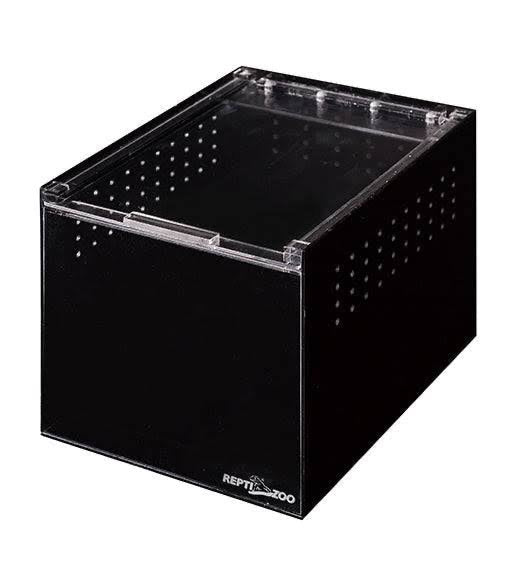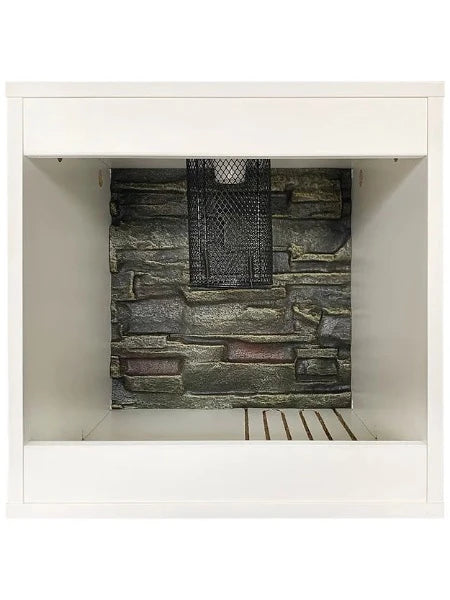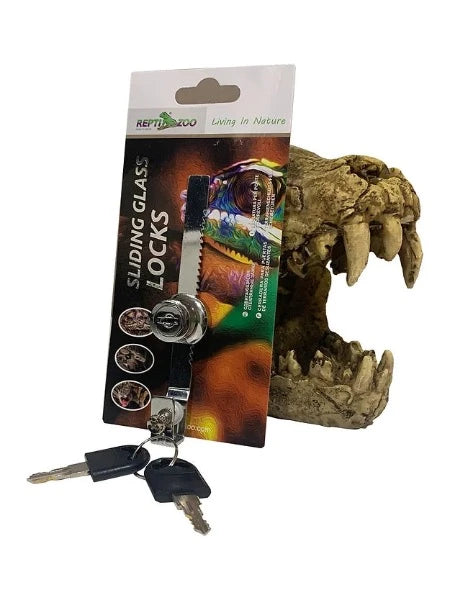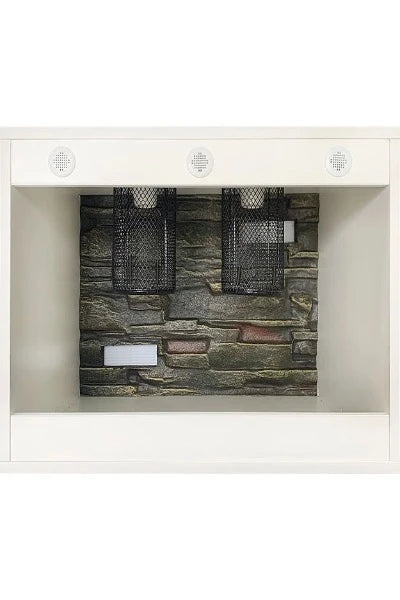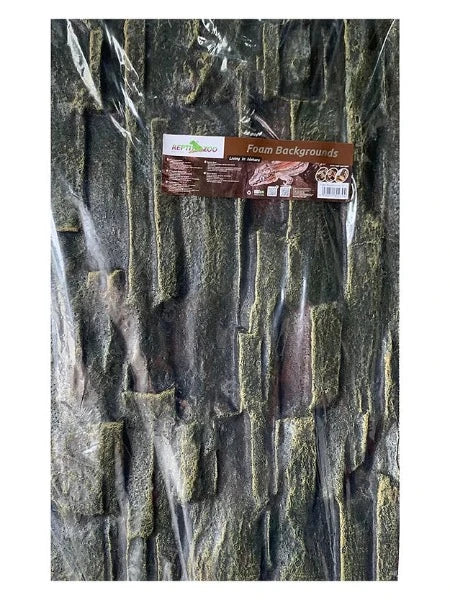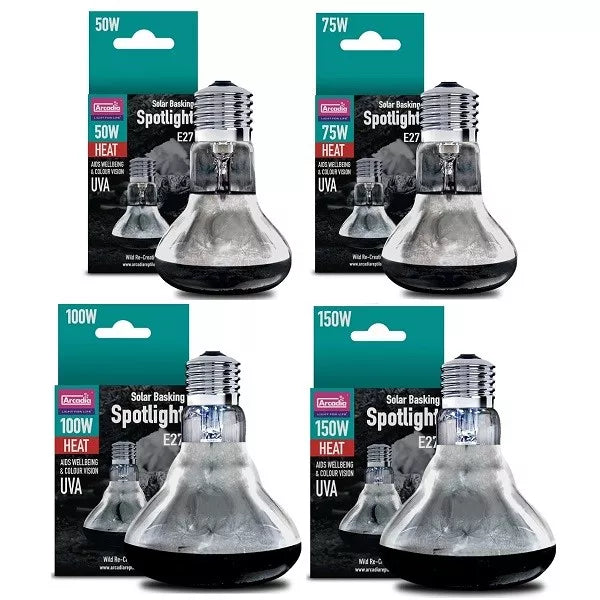Collection: Enclosures
Reptile enclosures serve as the primary habitat for captive reptiles, providing a controlled environment that mimics their natural habitat while ensuring their safety and well-being. These enclosures come in various shapes, sizes, and designs, catering to the specific needs of different reptile species.
Materials commonly used for reptile enclosures include glass, plastic, wood, and PVC. Each material has its benefits in terms of insulation, durability, and aesthetics. Enclosures typically feature a combination of solid walls, ventilated areas, and secure closures to create a comfortable and secure living space for the reptile.
Key components of a reptile enclosure include:
-
Size and Space: Enclosures should offer adequate space for the reptile to move, explore, and exhibit natural behaviors. The size of the enclosure varies depending on the species, with arboreal species needing vertical space for climbing and terrestrial species requiring more floor space.
-
Substrate: The substrate, or flooring material, varies based on the reptile's needs. It can include substrates like sand, soil, bark, reptile carpet, or paper towels, providing a suitable surface for the reptile to walk on and facilitating waste management.
-
Heating and Lighting: Proper heating and lighting elements are crucial in reptile enclosures to replicate the natural environment. Heat sources, such as heat mats, heat bulbs, or ceramic heaters, create thermal gradients, while UVB lighting is essential for reptiles requiring exposure to ultraviolet light for Vitamin D3 synthesis.
-
Hiding Spots and Enrichment: Including hiding spots, caves, branches, or rocks within the enclosure allows the reptile to feel secure and mimic natural habitats. Enrichment items like branches, foliage, or climbing structures encourage natural behaviors and provide mental stimulation.
-
Ventilation and Temperature Regulation: Enclosures should have adequate ventilation to maintain airflow and prevent the buildup of excess humidity. Thermostats and hygrometers help regulate and monitor temperature and humidity levels to ensure they are within the optimal range for the specific reptile species.
-
Safety and Accessibility: Secure locks or latches are essential to prevent escapes and keep the reptile safe. Additionally, accessibility for cleaning and maintenance is crucial for the health and hygiene of both the reptile and its enclosure.
Creating an ideal habitat within a reptile enclosure involves careful consideration of the reptile's species-specific requirements, providing an environment that supports their physical, mental, and behavioral needs. Regular cleaning, maintenance, and observation of the reptile's behavior within the enclosure are essential for their overall health and well-being in captivity.
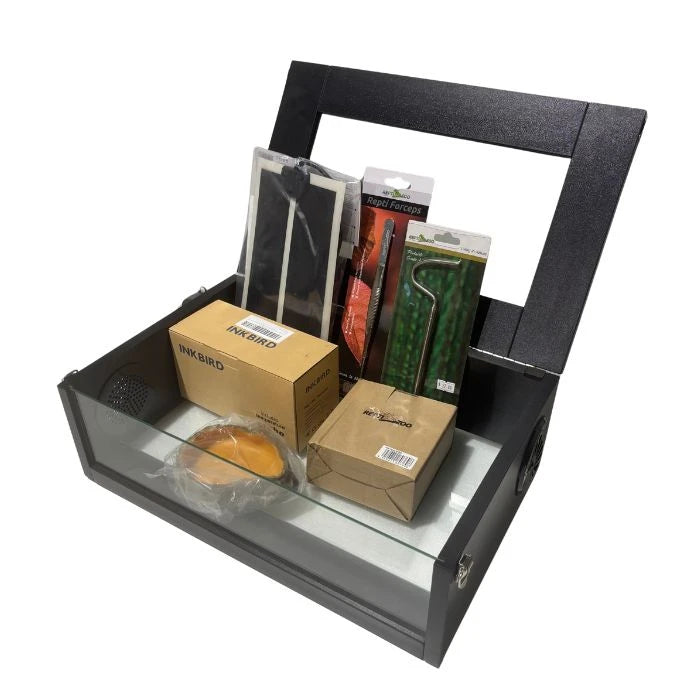
-
Reptile One SM2 - Hatchling Python Enclosure
Regular price From $189.00 AUDRegular priceUnit price / per -
Standard 5 foot Reptile Enclosure
Regular price From $750.00 AUDRegular priceUnit price / per -
Standard 4 foot Reptile Enclosure
Regular price From $570.00 AUDRegular priceUnit price / per -
Slimline 4 foot Reptile Enclosure
Regular price From $530.00 AUDRegular priceUnit price / per -
Slimline 3 foot Reptile Enclosure
Regular price From $470.00 AUDRegular priceUnit price / per -
Standard 3x4 foot Reptile Enclosure
Regular price From $750.00 AUDRegular priceUnit price / per -
Standard 4x3 foot Reptile Enclosure
Regular price From $750.00 AUDRegular priceUnit price / per -
Standard 4x4 foot Reptile Enclosure
Regular price From $850.00 AUDRegular priceUnit price / per -
Standard 6 foot Reptile Enclosure
Regular price From $850.00 AUDRegular priceUnit price / per -
Reptile One PRT40 Acrylic Carrier
Regular price $36.50 AUDRegular priceUnit price / per$45.00 AUDSale price $36.50 AUDSale -
ReptiZoo Acrylic Breeder Box
Regular price From $59.00 AUDRegular priceUnit price / per$65.00 AUDSale price From $59.00 AUDSale -
Snake and Gecko Enclosure 45x45x45cm
Regular price From $260.00 AUDRegular priceUnit price / per -
Snake and Gecko Enclosure 59x45x45cm
Regular price From $350.00 AUDRegular priceUnit price / per
-
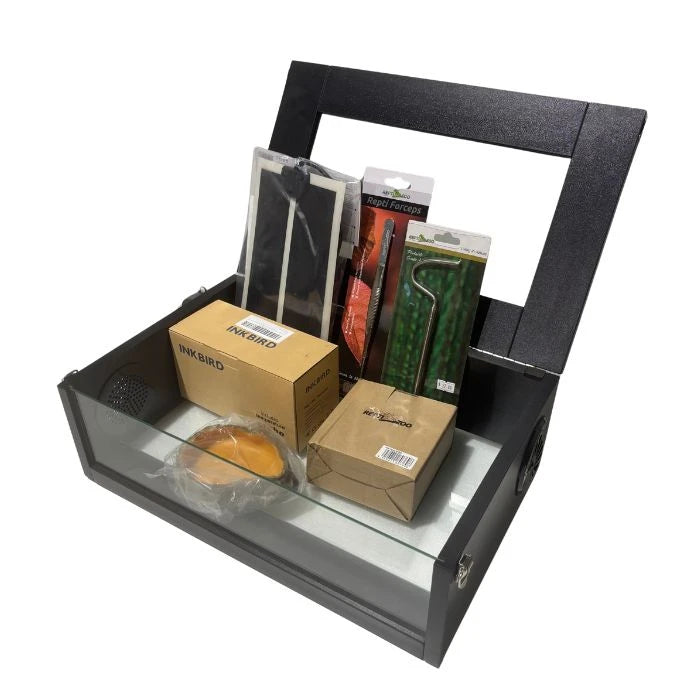
Enclosures
Reptile enclosures serve as the primary habitat for captive reptiles, providing a...
-
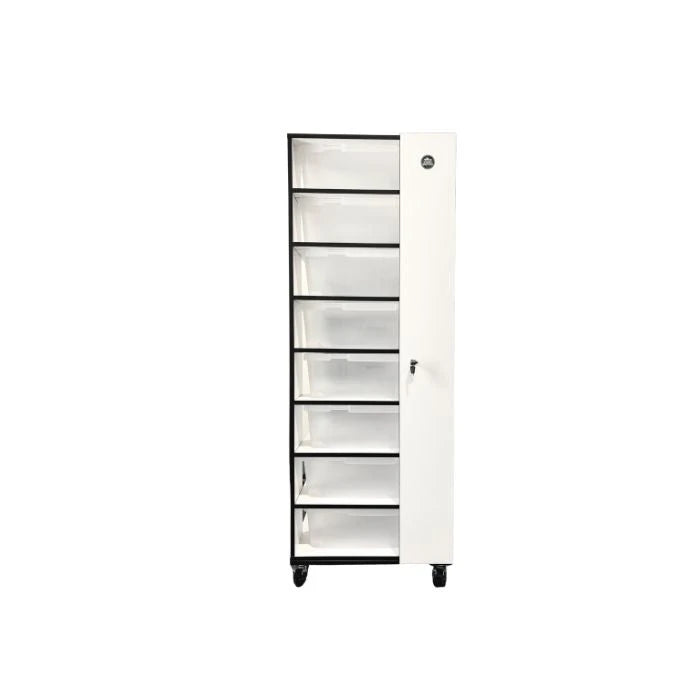
Reptile Racks
Reptile racks are specialized housing systems designed to efficiently and compactly house...
-
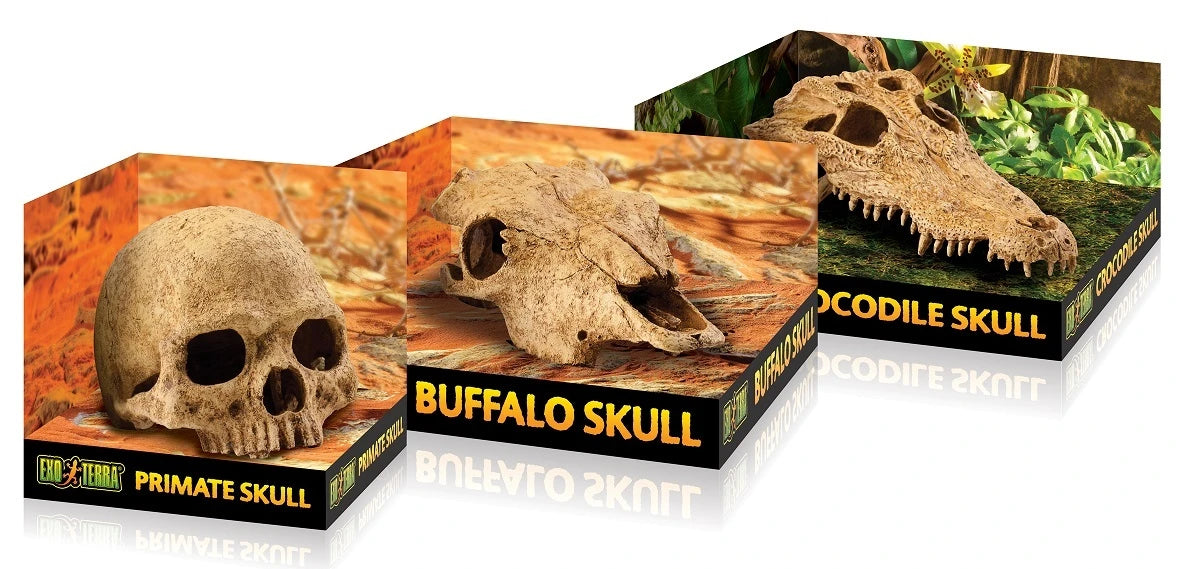
Reptile Decorations
Reptile accessories encompass a wide array of items designed to enhance the...

